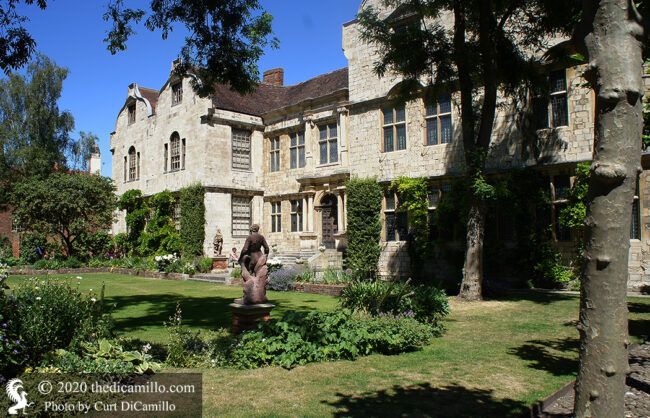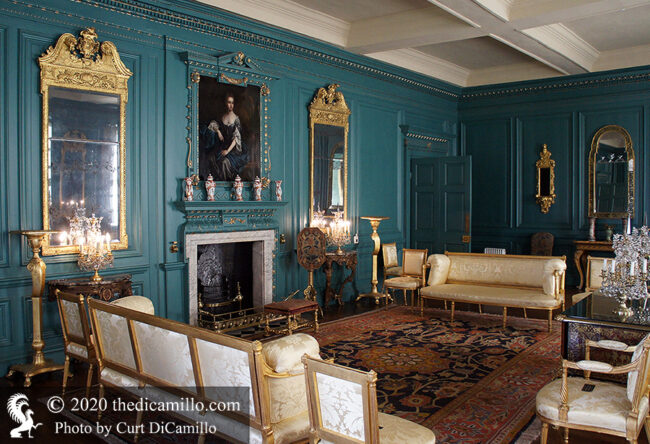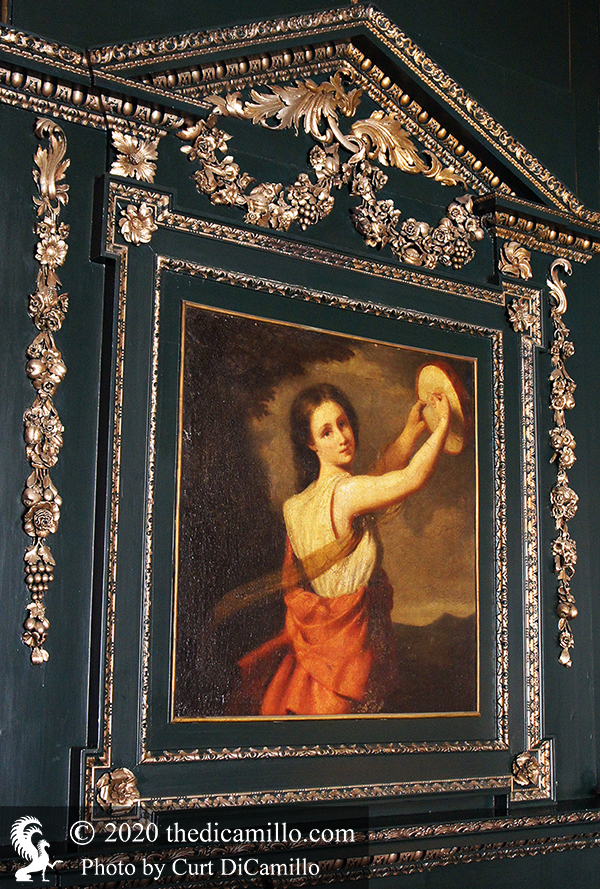
The entrance facade

The Great Hall

The Upstairs Drawing Room

Princess Victoria's Bedroom. Named for Edward VII’s daughter, the George II bed supposedly came from Houghton Hall, Norfolk.

Princess Victoria's Bedroom. This chimneypiece came from Micklegate House, York.
Built / Designed For: Rebuilt for Thomas Young in the early 17th century
House & Family History: Located directly to the north of York Minster, the first Treasurer's House was built in the 11th century, when the position of treasurer was established by Archbishop of York Thomas of Bayeux. As the chief financial officer of the minster, it was important that the treasurer be housed in appropriate splendor in order to properly entertain important guests. All that remains of this first house is an external wall that today forms part of Grays Court. Treasurer's House was built and rebuilt over the centuries, until the Reformation, which brought the position of treasurer of York Minster to an end. In May of 1547 the last treasurer turned the house over to the crown, who granted Treasurer's House to Edward Seymour, 1st Duke of Somerset. The duke almost immediately sold the house to Archbishop Robert Holgate. Fourteen years later Treasurer's House was purchased by Thomas Young, who served as archbishop of York from 1561 until 1568. The Young family maintained ownership of the house for over 80 years; it was they who rebuilt Treasurer's House in the 17th century, leaving the bones of the house as it is today. In 1617 the king, James I, was hosted at Treasurer's House by Sir George Young. The house passed through a number of owners in the 17th century, until it was inherited in 1711 by Jane Squire, who converted Treasurer's House into tenement housing. The house was restored to its current state by Frank Green, a wealthy local industrialist and fervent collector of antiquities. Between 1897 and 1898 Green purchased each part of Treasurer's House (which had been divided into multiple ownership) and carefully restored the house. In 1930 Mr. Green donated Treasurer's House and its contents to the National Trust. Lest we forget, York was founded by the Romans in 71 AD; thus, it's not surprising that Treasurer's House was built directly over one of the main Roman roads leading out of York to the north. During Frank Green's restoration work four Roman column bases were uncovered in the basement; one remains in situ in the cellar and one was used as a base for a modern set of columns installed in the early 20th century in the main hall. Like many old British houses, Treasurer's House is supposedly haunted by several ghosts, the most famous of which are a group of Roman soldiers that appear in the basement. These spectres were first witnessed in the 1920s, and then, in 1953, by Harry Martindale, a young plumber’s apprentice who was working in the basement for the National Trust. Martindale was repairing pipework when he became aware of music that sounded like the blare of trumpets or coronets; after the music ceased, a Roman soldier, wearing a plumed helmet, emerged from the wall, followed by a cart horse and about ten pairs of green tunic-clad armed legionaries marching in formation. Martindale was so frightened by the apparitions he'd witnessed that it was several weeks before he would agree to return to work at Treasurer's House. Many years later, excavations in York revealed that the descriptions of the soldiers' uniforms given by Martindale, dismissed in the 1950s as uncharacteristic of Roman soldiers of the time, in fact matched those of local reserve units who took over the Roman garrison in York when the regular soldiers began returning to Rome in the 5th century.
Country Life: XIX, 234, 1906. LII, 114, 144, 1922.
Title: National Trust Handbook 2001, The
Author: Dittner, Liz (Editor)
Year Published: 2001
Publisher: London: The National Trust
ISBN: NA
Book Type: Softback
House Listed: Grade I
Park Listed: No Park
Past Seat / Home of: Edward Seymour, 1st Duke of Somerset, 16th century. Archbishop Robert Holgate, 16th century. Thomas Young, Archbishop of York, 16th century; Sir George Young, 17th century. William Belt, 17th century. Charles Fairfax, 5th Viscount Fairfax of Emley, 17th century. George Aislabie (Aislaby), 17th century. Robert Squire, 1698-1709. Frank Green, 1900-30.
Current Ownership Type: The National Trust
Primary Current Ownership Use: Visitor Attraction
House Open to Public: Yes
Phone: 01904-624-247
Fax: 01904-647-372
Email: [email protected]
Website: https://www.nationaltrust.org.uk
Historic Houses Member: No